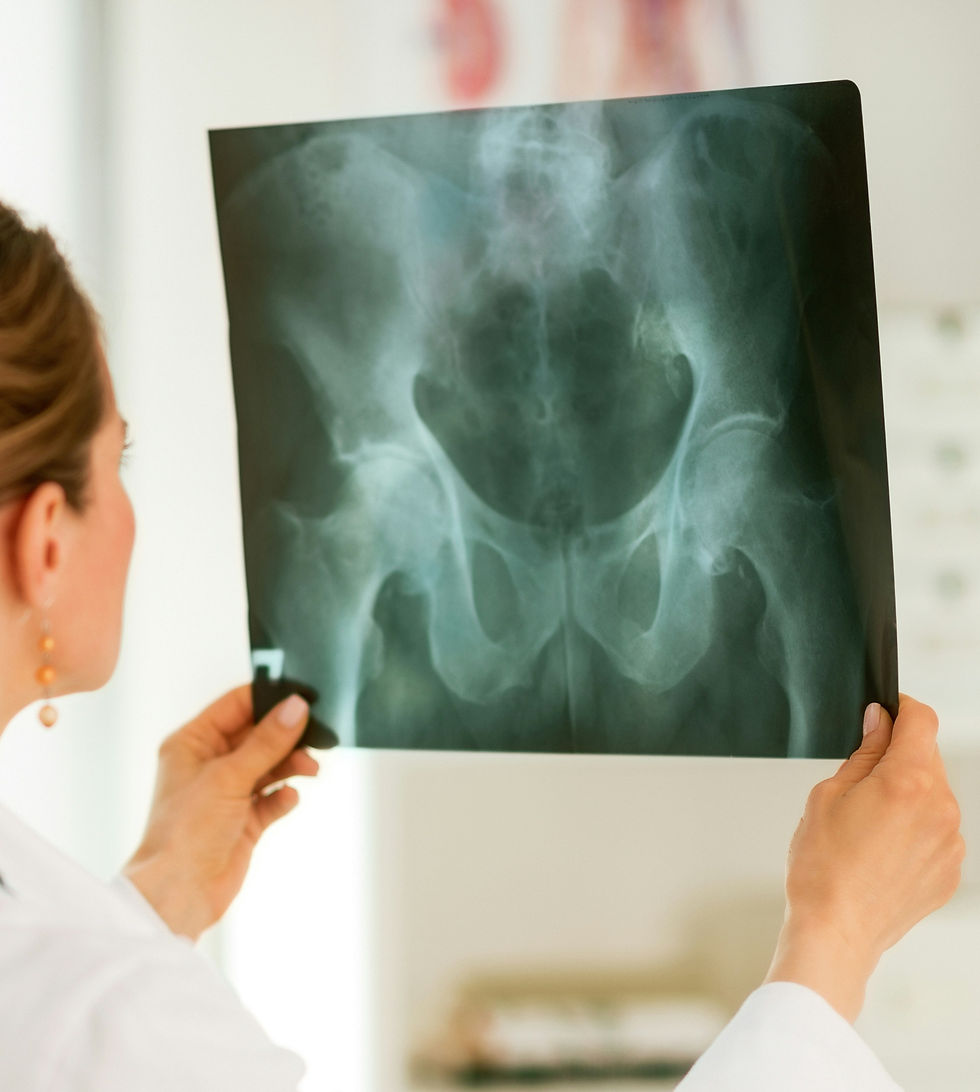Linear Vibration vs. Pivotal Oscillation: Which Is Better for Osteoporosis?
- The Joyfull Rose

- 4 days ago
- 3 min read
Updated: 3 days ago

Whole-body vibration (WBV) has become an increasingly popular tool for supporting bone health, especially among postmenopausal women and individuals at risk of osteoporosis. But not all vibration platforms work the same way, and understanding the differences is key if you want the best therapeutic impact.
Among the two primary types of vibration—linear (vertical) and pivotal (oscillating)—current research trends suggest a clear winner for bone density: linear vibration, particularly when delivered at low intensity and high frequency around 30 Hz.
Why Linear Vibration Comes Out on Top
Linear vibration platforms move the body in a straight up-and-down motion, generating forces that travel vertically through the skeleton. This type of mechanical loading closely mimics the way bones naturally experience force during activities like walking, small jumps, or strength training.
Research suggests that frequencies in the 30–35 Hz range are especially effective at stimulating:
Skeletal muscle contractions
Osteogenic (bone-building) response
Improved bone mineral density (BMD) over time
In fact, several sources highlight 30 Hz as the most widely accepted frequency for treating osteoporosis. At this frequency, muscles achieve optimal contraction, enhancing mechanical stimulation to bones.
Low-Intensity Vibration Shows Promising Results
Studies on low-intensity vibration (LIV)—typically meaning low magnitude but high frequency—have found improvements in BMD in key areas vulnerable to osteoporosis, including the:
Femoral neck
Hip
Lumbar spine
These positive outcomes are especially notable in postmenopausal women, who are at the highest risk for accelerated bone loss.
Why Pivotal Oscillation Often Falls Short
Pivotal, or oscillating, vibration platforms move like a see-saw, tilting side to side around a central fulcrum. While this design offers certain benefits for balance, it may be less effective for bone-stimulating therapy.
Some of the limitations include:
Less uniform stimulation compared to linear platforms
Reduced comfort, which may limit session duration
Restricted dynamic movement, making therapeutic exercise integration more difficult
Uneven force distribution, which may diminish osteogenic impact
Although some studies report no significant change in BMD with WBV in general, the most encouraging findings—especially for osteoporosis—are consistently seen with linear, low-magnitude, high-frequency vibration.
What This Means for People with Osteoporosis
If you’re considering whole-body vibration as part of your osteoporosis prevention or management plan, current evidence points toward:
✅ Linear (vertical) vibration platforms
✅ Low-intensity, high-frequency vibration (~30 Hz)
This combination appears to deliver the most reliable increases in bone density, muscle activation, and overall skeletal health.
However, it’s important to remember that WBV should complement—not replace—other proven interventions such as resistance training, adequate calcium and vitamin D intake, and medical guidance from a healthcare professional.
Final Thoughts
Although whole-body vibration research continues to evolve, the trend is clear: linear vibration at around 30 Hz provides the most consistent benefits for bone density, especially in populations most at risk for osteoporosis. Pivotal oscillation may still have value for balance and rehabilitation, but when it comes to stimulating bone growth, linear platforms appear to lead the field.
If you’re exploring vibration therapy, choosing the right platform and frequency can make all the difference in achieving meaningful results.
Featured Device: Vibration Therapeutic VT007 Linear Vibration Plate
Why It Stands Out for Bone Health:
Linear (Vertical) Motion: The VT007 uses true up-and-down vibration, which delivers more uniform and anabolic mechanical loading to bones. This matches clinical research that favors linear, high-frequency stimulation for bone density gains.
Therapeutic Frequency Range: It supports 15–40 Hz vibration. That’s critical — many studies identify this window (especially 20–35 Hz) as optimal for activating bone-building processes in cells.
Dual Amplitude Settings:
Low amplitude: ~0.7–1.2 mm — ideal for safe, gentle stimulation.
High amplitude: ~1.5–2.6 mm — offers more mechanical signal when needed.
Durability & Control: The platform has a separate control box, making the vibration mechanism more reliable. It also offers manual mode plus three preset programs (P1, P2, P3).
Serviceability & Warranty: Long-term serviceability and good build quality make it practical for consistent use — which aligns with research that shows consistent, repeated sessions yield better bone results.
Designed for Skeletal Muscle Resonance: According to the manufacturer, the 15–40 Hz design is tuned to resonate with skeletal muscle, maximizing the mechanical response. This resonates with the idea that vibration works by enhancing muscle contraction and applying force to bone.
Research Incentive: The manufacturer even runs a user-based research incentive for people with osteopenia/osteoporosis to share their bone-density results after using the VT007.




Comments